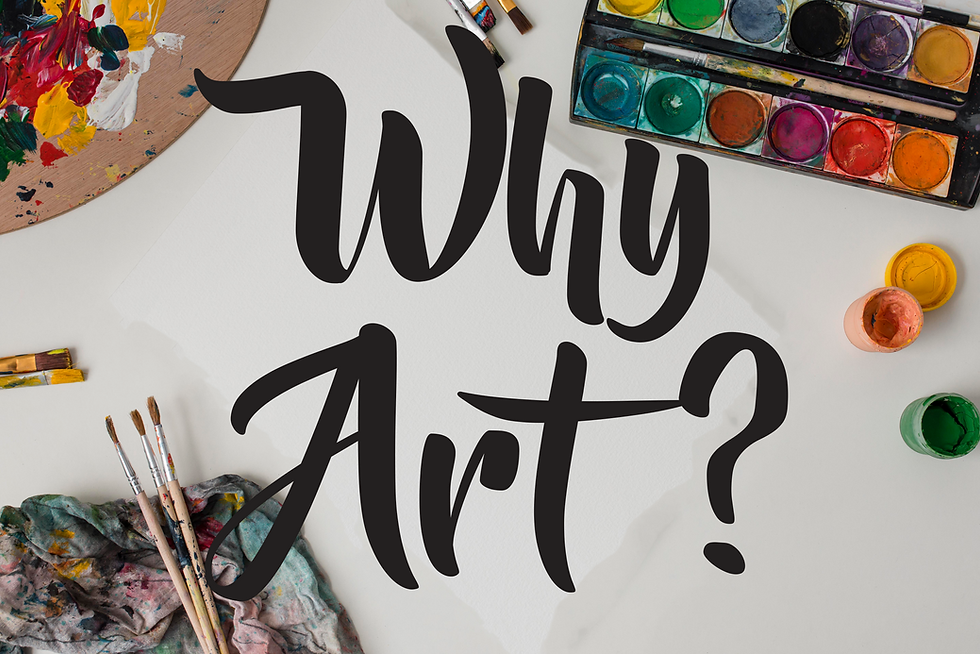What’s Trending in Art Education
- Hope Creek Studios

- Aug 19
- 3 min read
What’s Trending in Art Education This Year
Fresh Ideas to Inspire Your Teaching Practice
As the world continues to shift around us, so does the way students learn, create, and connect. Art education is evolving rapidly—fueled by digital tools, increased student autonomy, and a greater understanding of creativity’s role in mental health and personal development. Staying inspired and relevant means tuning into what’s changing and embracing a few new strategies in the art room.
To help you launch your school year with energy and vision, here are four powerful trends shaping art education right now—plus practical ways to bring them to life in your classroom.

Trend 1: Student Autonomy Is the New Standard
Today’s students are growing up in a world where they personalize everything—streaming playlists, phone cases, and avatars. So it’s no surprise they want more choice in how they learn and create.
In the art room, this means shifting from a one-size-fits-all approach to offering structured choice. Full-on choice-based classrooms aren’t for everyone, but starting small can make a big impact.
✅ Try This:
Choose a small, underused area in your classroom (like a messy supply table or side shelf).
Reimagine it as a student-directed mini-studio—perhaps a limited-material collage cart, a drawing station with prompts, or a self-serve bin of pastels and paper.
Keep it simple: offer just 2–3 curated materials at a time. Rotate options based on projects or student interests.
Empowering students to make decisions about tools, materials, or subjects fosters deeper engagement and creative risk-taking.

Trend 2: Digital Art Is No Longer Optional
Students live in a highly digital world—many arrive already creating with apps, filters, and AI. They’re eager to use tech tools in their artistic process, and art classrooms can be the perfect place to show how digital art is both creative and expressive.
You don’t need to be a tech expert to dive in. Even simple digital layers on top of traditional art can spark new ideas and curiosity.
✅ Try This:
Take a traditional medium you love (like watercolor or collage) and layer a digital tool over it.
For example: scan a student sketch, then have them use a drawing app to play with color overlays or patterns.
Use tablets or laptops to create digital still life collages, experiment with symmetry tools, or explore color fills and layering.
Blending digital with hands-on media keeps things fresh while reflecting the real-world creative tools students are drawn to.
Trend 3: Teachers Want (and Deserve) Autonomy Too
It’s not just students who benefit from voice and choice—art teachers thrive when they can shape their own professional development. Unfortunately, many educators report that traditional PD doesn’t reflect the realities of the art room. It’s often too general or not directly applicable.
Art teachers are increasingly seeking professional learning that’s self-paced, studio-based, and focused on real classroom challenges.
✅ Try This:
Pick one topic you’ve been wanting to explore (color theory, SEL, sculpture, classroom management, etc.).
Find a short article, podcast episode, or video tutorial on the subject and commit to learning for 15–20 minutes.
Even better: invite a fellow art teacher to join you. Chat about it over coffee or create art together while discussing.
Learning doesn’t have to mean long seminars or thick binders. Short, meaningful experiences can be just as powerful when they’re self-directed and relevant.

Trend 4: Growth Over Grades—Celebrate the Process
While student success often gets measured in final products, many art teachers say their greatest joy comes from watching creative growth unfold. This trend is all about shifting focus from perfection to progress.
Whether it’s a student becoming more confident, trying a new technique, or showing persistence, the process is worth spotlighting.
✅ Try This:
Create a space in your classroom that celebrates effort and exploration. Try a “Wonder Wall,” a rotating display of works-in-progress or creative risks.
Choose a simple recognition system like “Student Artist of the Week” to highlight progress.
Use positive sticky notes or “kindness confetti” to give written feedback focused on growth and effort.
When students know their journey matters more than a polished end result, they’re more likely to take creative risks—and grow in confidence.
🎉 Final Thoughts: Build Your Best Art Room Yet
These trends—student independence, digital exploration, personalized PD, and growth-focused learning—aren’t just “hot topics.” They reflect deeper shifts in education, creativity, and connection. The art room can be a powerful place for students and teachers alike when we lean into those changes with intention.
This year, try something new. Curate a little more choice. Play with digital tools. Advocate for your own learning. And most importantly, celebrate your students and yourself every step of the way.
Which trend speaks to you the most? What will you try in your classroom this year?

©HOPECREEKSTUDIOS2025





Comments